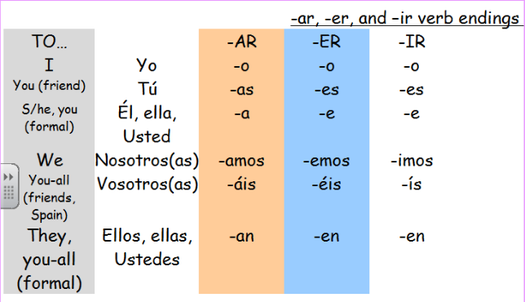
There are several uses of the past participles in Spanish.
IR PAST PARTICIPLE SPANISH HOW TO
All you need to do is remove the -ar ending of the infinitive verb, then add -ado to create the past participles.Įither way, there are many past participles and many more irregular ones, so just stay on your toes as you learn them! How to use the past participle Now, let’s look at all the ways you can create a past participle: Ar Verbsįor -ar ending verbs, it couldn’t get any easier. This is because the participle always functions together with another verb or as an adjective (more on that later). In fact, it doesn’t matter if it’s yo, tú, etc., since it’s always the same. How to form the past participle in Spanishįorming the past participle verbs in Spanish is actually one of the easiest verb tenses to conjugate. In today’s article, we are only focusing on the verbs on the right-hand side. So make sure to remember this as we’re going forward. However, jumped and gave (on the left side) are both the simple past.

But that’s a topic we’ll cover another day.

The only exception to the rule, when the Spanish past participle is not used in conjunction with another verb, is usually in a perífrasis verbal. This means that in order to understand other verb tenses, the first thing you’ll need to do is master this participle. In other words, it’s a verb tense that always goes together with another verb. The past participle is a verb conjugation that is typically used in conjunction with another verb. So let’s get down to it! Here is a guide for absolutely everything you need to know about the past participle in Spanish. Sure, there are a few irregular verbs to use and you can use the past participle in conjunction with other tenses, but you’ll be a master at it in no time!

Today you’re going to be getting down and dirty with some grammar – you’re learning everything there is to know about the past participle in Spanish.īut the best part about this entire situation is that the past participle (or better yet, the past participles) is actually a relatively simple Spanish grammar tense.


 0 kommentar(er)
0 kommentar(er)
